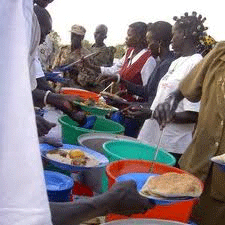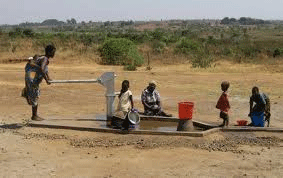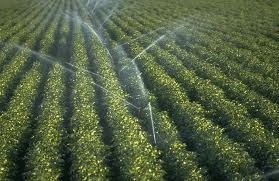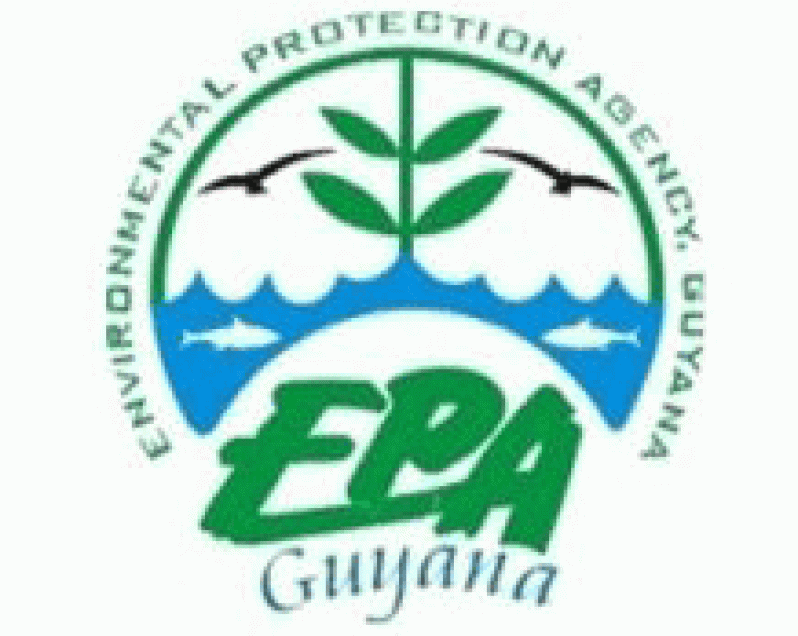 Food security exists when all people at all times have access to sufficient, safe and nutritious food that meets their dietary requirements for a healthy life. Water is an important resource when it comes to food security. When persons have access to clean, potable water, they usually have better levels of nourishment. Lack of water is a major cause of famine and malnutrition, particularly in areas where people depend on local agriculture for food and income. Even floods cause food emergencies.
Food security exists when all people at all times have access to sufficient, safe and nutritious food that meets their dietary requirements for a healthy life. Water is an important resource when it comes to food security. When persons have access to clean, potable water, they usually have better levels of nourishment. Lack of water is a major cause of famine and malnutrition, particularly in areas where people depend on local agriculture for food and income. Even floods cause food emergencies. 
How important is water to us?
Water is needed for the production of all food – whether it is meat, milk, bread, cheese or rice – any food item requires water to grow and to be processed. Additionally, fish from rivers, wetlands, lakes and aquaculture contributes about 25 percent to the world’s fish production. While inland fisheries and aquaculture do not use up water they do require a certain quality of water in rivers, wetlands and lakes and are, therefore, important water users.
 However, the world is being faced with a water crisis. Currently, water scarcity affects every continent, with more than 40 percent of the people on our planet living under water-stressed conditions. Added to this, there are over 7 billion people to feed on the planet today and this number is ever increasing. This increasing population means that less water is available for agricultural use since there is more water demand for cities and industries. This increased competition for water leads to lack of water for the poor and other vulnerable groups. Therefore, farmers are not able to produce enough food to eat or earn a living.
However, the world is being faced with a water crisis. Currently, water scarcity affects every continent, with more than 40 percent of the people on our planet living under water-stressed conditions. Added to this, there are over 7 billion people to feed on the planet today and this number is ever increasing. This increasing population means that less water is available for agricultural use since there is more water demand for cities and industries. This increased competition for water leads to lack of water for the poor and other vulnerable groups. Therefore, farmers are not able to produce enough food to eat or earn a living.
The fact that a quarter of the world’s lands are degraded makes this situation even worse. Overuse of chemical fertilizers and pesticides in agriculture have lead to the contamination of water bodies. Water pollution is a significant cause of reduced water availability and can have serious impacts on the environment and on human well-being.
Climate change also affects our water availability. The occurrence of frequent and severe droughts, excessive rainfall, and floods can destroy crops and would essentially put food production at risk. Many large rivers now run dry during part of the year, seriously impacting aquatic biodiversity. Persons living in such fragile environments, face a great risk of being unable to meet their daily needs due to loss of livestock and crops, especially if they depend on agriculture for their livelihoods.

How can we produce food with less water?
To cope with the growing population, something needs to be done that will save our water resources, while at the same time ensuring that food is produced to feed us. Therefore, the future production of food and other agricultural products will have to be focused on using water better in the fields. Re-using wastewater is one way in which our water resources can be saved. In fact, once treated properly, wastewater from cities can be a precious source of water and nutrients for agriculture.
Conserving the ecosystems that sustain the availability and quality of our water resources will also contribute to their protection. Conservation agriculture is a farming practice that enhances the contribution of soils and land cover to reducing water related risks for crops and, at the same time, contributes to improving both the quantity and quality of groundwater and rivers. There is no doubt that a good and well-maintained soil can capture rainwater and avoid surface runoff that causes erosion and the loss of soil nutrients. Conservation agriculture is characterized by three principles, namely:
• Minimum soil disturbance.
• Permanent organic soil cover.
• Growing different species of crops, either together or in succession.
Here are some personal tips that will help to maintain our water resources:
• follow a healthier, sustainable diet;
• consume less water-intensive products – dairy products require large quantities of water to be processed. Make a conscious effort to eat less meat.
• reduce food wastage: 30 percent of the food produced worldwide is never eaten and the water used to produce it is definitively lost!

Did you know?
• Drought ranks as the single most common cause of severe food shortages in developing countries. Drought caused more deaths during the last century than any other natural disaster.
• To produce a slice of bread 40 litres of water is used; it takes about 1500 litres of water to produce 1 kg of wheat (used for flour), but it takes 10 times more to produce 1kg of beef!
To learn about Water and Food Security, visit the following website: http://www.unwater.org/worldwaterday/
Consider the amount of water used to produce the following food items and calculate how much water is needed to produce your meals.

You can share ideas and questions by sending your letters to: ‘Our Earth, Our Environment’, C/o EIT Division, Environmental Protection Agency, Ganges Street, Sophia, GEORGETOWN, or email eit.epaguyana@gmail.com




.jpg)









